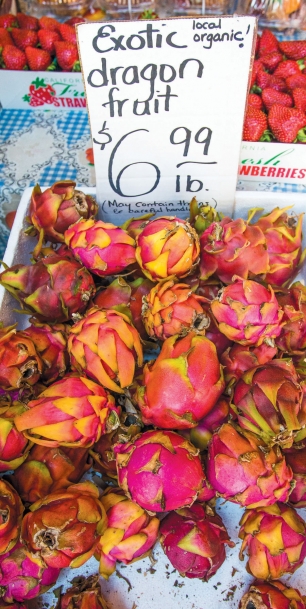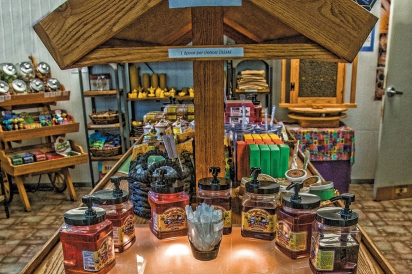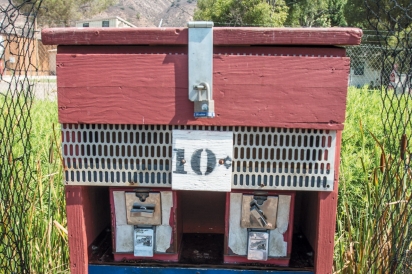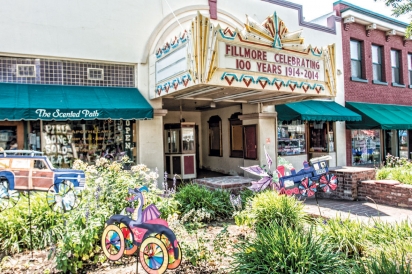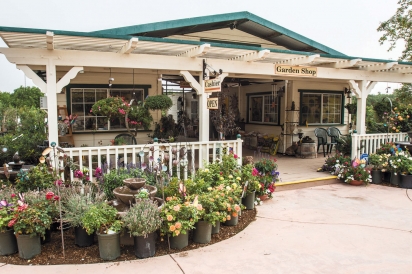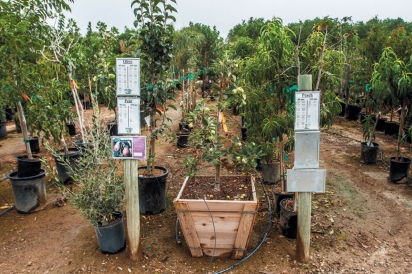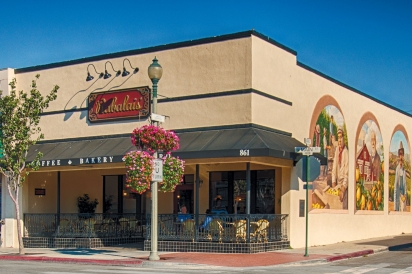Meandering Through the Santa Clara River Valley
I like to drive north to the Bay Area, taking the scenic 101 and sometimes the even-more-scenic Highway 1 through Big Sur to Monterey. When I'm ready to return home, I take the Interstate 5 for speed. It's nerve-wracking keeping up with traffic going 85 mph for over five hours. Finally I navigate the intersection in Newhall and turn west onto Highway 126.
Things immediately get better.
The speed limit changes abruptly to 55 mph. I'm ready for it. On the last leg of my most recent trip home, I happened to be driving side-by-side with a brand-new Ferrari with paper plates and the top down. As the Ferrari's driver exactly matched the speed of my old VW bug, he had a grin on his face from ear to ear. He knew how to enjoy the drive through one of the last undeveloped river valleys in California. He and I both adjusted our pace to match our place.
Most people use Highway 126 to carry themselves north or south and do nothing but try to maximize their speed and merely glance at the scenery.
I encourage you to use Highway 126 for a drive in the country through this scenic and historic valley and explore, as I did recently.
Crossing into Ventura County near Santa Clarita leads to something rare and unusual for Southern California: undeveloped agricultural land.
Ventura County has a greenbelt program that preserves open spaces beyond city limits. It protects our open space and agricultural lands within these areas. The first greenbelt–between the cities of Ventura and Santa Paula–was adopted by the county in 1967. There are now seven in the county. The area from the I-5 all the way to Saticoy is practically one huge greenbelt.
PIRU
Beginning an exploration of the Santa Clara River Valley in Piru is a good idea because after a few hours of exploring, the plan is to wind up in Santa Paula for lunch. Downtown Piru looks like a Hollywood movie set of a 1930s town. Not much action, but classic Americana.
Put Lake Piru on your list for when you have more time to explore nature. The real destination in Piru for any self-respecting foodie is Bennett's Honey Farm (BennettHoney.com). Look for the sign on 126 near the old schoolhouse and turn up Honey Lane.
I've tasted every variety on the bulging shelves and have come to prefer eucalyptus. The store is fully stocked with honey and all kinds of honey stuff. The bees do most of the work, but humans put the honey into jars in the adjoining buildings.
Back on Highway 126, I accelerate to the optimal preferred speed of 55 mph. It doesn't take long to arrive at Francisco's Fruits (805- 524-4616), one of the largest fruit stands in the valley and lots of fun to browse.
I load up on local strawberries and other seasonal offerings to bring home and eat throughout the week. Francisco's sister, Elena, is behind the counter and we chat as a steady stream of regulars and travelers tell me this is their favorite place to stop on their journey up and down the valley. In the back, there's a stage and lights set up for live Latin music on Sunday afternoons, with Francisco playing.
FILLMORE
Cruising west toward Fillmore is continuously amazing, nothing but trees and plants growing in neat rows and rolling hills on both sides of the riverbed. Occasionally there are historic houses.
I'm old enough to remember when large portions of Southern California looked like this.
It's time to feed something besides my own face, so I turn onto Fish Hatchery Road and head across the railroad tracks to the Fillmore Trout Hatchery (DFG.Ca.Gov/Fish/Hatcheries/Fillmore), open daily from 7am to 3:30pm.
The trick is to remember to bring plenty of dimes; the machines dispensing the fish food only take dimes. Put a dime in the slot, turn the crank and out comes a handful of fish food. When you throw some in the water, it turns into a feeding frenzy with hundreds of rainbow trout competing for their treat. The water roils with fish for a few seconds and then goes back to normal.
The hatchery was dedicated by the state in 1942 and is one of 21 managed by the California Department of Fish and Wildlife. The hatchery produces approximately 1 million rainbow trout each year–that's 400,000 pounds in all. These fish stock over 40 fishing sites in California.
Fillmore is celebrating its 100th anniversary while I'm here, so I pretend it's the old days and park my buggy in the downtown and walk around. I always hit The Scented Path Apothecary (ThePerfumed-Dragon.com) for some essential oils and a couple of the antique shops for treasures.
My next destination is Otto & Sons Nursery (OttoAndSons-Nursery.com).
The original bridge over the Santa Clara River was destroyed by the St. Francis Dam Disaster in 1928. The new bridge does a good job and gets me right next to Elkins Ranch Golf Course, where I turn left onto Guiberson Road for four miles of bliss on the way to the nursery.
There's agriculture in action on the left and right and gentle winding curves among the trees. Otto's fantastic collection of plants keeps changing with the seasons. It makes sense to me to buy plants in the country and not the city.
SANTA PAULA
The 10th Street off-ramp drops visitors and locals right onto California State Route 150. That leads through the downtown and up and over the hill past Thomas Aquinas College all the way to Ojai and beyond. It's a favorite ride for motorcyclists and serious bicyclists on the weekends.
Downtown Santa Paula and Fillmore are both "stop, park and walk" towns. There's a lot to see and do in Santa Paula and everything changes with the seasons, just like the surrounding agriculture.
Perennials include the Santa Paula Art Museum, the Museum of Ventura County's Agriculture Museum, the Aviation Museum and the Santa Paula Theater Center. After all that gentle traveling at a pace that enhanced the place, food is in order.
Rabalais' (RabalaisBistro.com), a Southern Cajun bistro and bakery, is great anytime, whether you're seated indoors or out on the patio. I always save room for some made-to-order beignets.
I get in my VW bug and head down Main Street. And I am home.
How you decide to get home from the Santa Clara River Valley is your own business. Just remember, though: The road you take always runs both ways.


